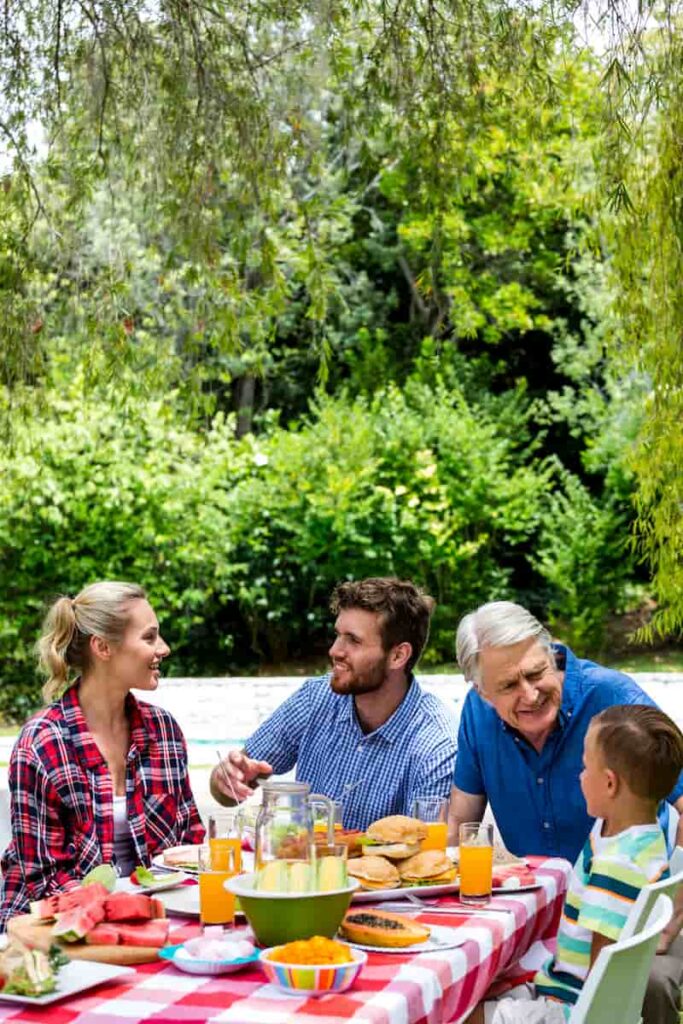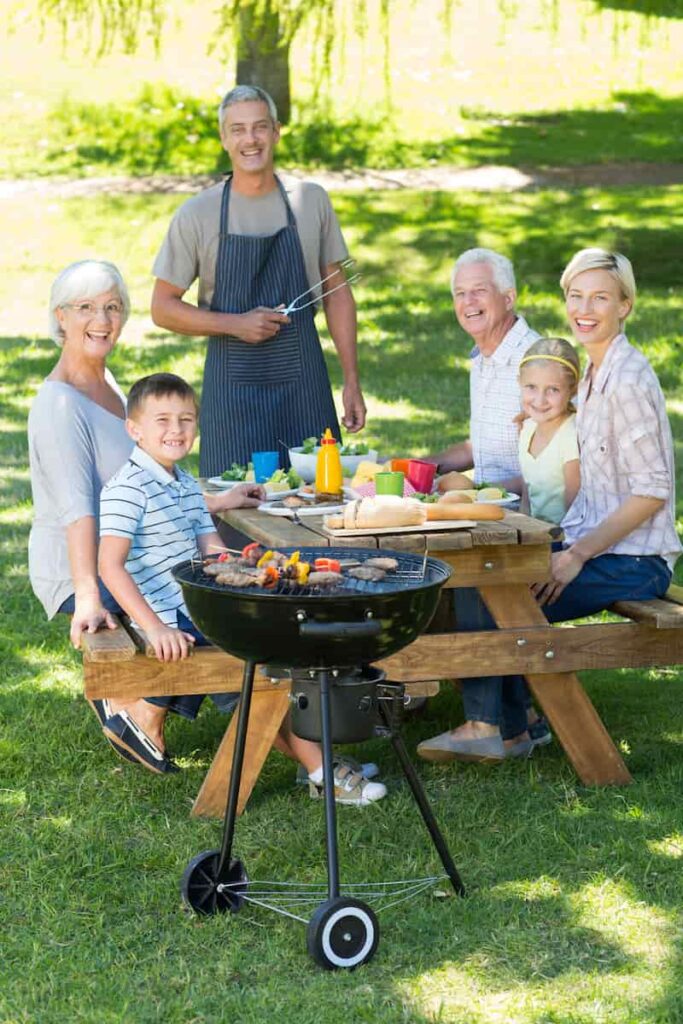Want to expand your vocabulary and impress your Scandi-loving friends with some unique and cool Norwegian words? Well, the land of fjords and Northern Lights can certainly deliver!
Known for its stunning natural beauty, rich cultural heritage, and unique way of life, Norway is also home to some of the coolest words you’ve probably never heard of.
From “dugnad” to “koselig” to “harryhandel,” these words offer a unique glimpse into Norwegian culture and society.
So grab your favorite cozy sweater and get ready to explore the world of cool Norwegian words that will have you saying “uff da!” and “skål!” in no time.

Table of Contents
Cool Norwegian words
1. Agurknytt
“Agurknytt” means “cucumber news” in English. This word is used to describe news or information that is completely unimportant or irrelevant.
It’s like when someone tells you a story that has absolutely no significance – you’ll just say in response: “That’s cucumber news!”
2. Attpåklatt
The word “Attpåklatt” is used to describe the youngest child in a family, specifically one that’s born a long time after their older siblings.
It literally translates to “on-top-sprout,” which refers to the youngest child growing on top of the others. It’s a cute and playful word that accurately describes the youngest – and probably the most spoiled member of the family (definitely true and I’m not just saying it as the oldest in my family, of course!).
3. Avspasere
“Avspasere” means to take time off work without pay instead of being paid for overtime you’ve worked.
This is a great word to know if you ever plan on visiting Norway and want to take a day off to explore the city or go hiking. You can simply tell your boss “jeg skal avspasere i morgen,” which means “I’m taking time off tomorrow!”
Related: Norway vs Sweden: Which Should You Visit (or Move To)?
4. Døgn
The word “Døgn” means a full 24-hour period – but it’s not the equivalent of “day” which can mean both 24 hours or “the period when it’s light” (like, when you do something “during the day”).
It’s a useful word when talking about hotel stays, as many hotels in Norway charge by the døgn instead of by the night. So if you’re planning a trip to Norway and want to book a hotel room, you might see a price listed as “500 kr per døgn,” which means 500 Norwegian kroner per 24-hour period.
5. Døgnvill
The word “Døgnvill” is used to describe the feeling of being disoriented or confused due to lack of sleep or not knowing what time it is.
It’s like experiencing jet lag or being in a new time zone, but it can also happen when you stay up too late and lose track of time – or, in the case of Norway, if you’re somewhere with very long days during summer so you can’t tell what time it is.
6. Dørstokkmil
“Dørstokkmil” is a word that describes the distance between the threshold and the outside of a house, and it’s used to describe the feeling of not being able to leave a place or take the first step.
It’s like the feeling you get when you’re standing at the doorway, trying to psych yourself up to leave the house to, say, go to the gym, but you just can’t bring yourself to do it.
So the next time you’re feeling dørstokkmil, take a deep breath and remember that the first step is always the hardest.

7. Dugnad
“Dugnad” is a Norwegian tradition where a group of people come together to do voluntary work for their community. It’s a way to help out and get things done, like cleaning up a local park or painting a community center.
It’s a great way to build a sense of community and work towards a common goal, and it’s something that’s deeply ingrained in Norwegian culture.
8. Eventyrlysten
“Eventyrlysten” is a word that describes the feeling of being adventurous or wanting to explore new things. It’s like having a thirst for adventure and wanting to see the world.
This is also something that’s deeply ingrained in Norwegian culture, as Norway is known for its stunning natural beauty and the adventurous spirit of its people.
So if you’re feeling eventyrlysten, go out and explore – you never know what kind of adventures you might find!
You may also be interested in: 11 Most Beautiful Norwegian Islands For You To Explore
9. Fellesferie
In Norway, it’s common for many people to take their summer holiday at the same time, which is known as “Fellesferie” or “common holiday.” It usually happens during the last two weeks of July, and many businesses and shops may close during this time.
It’s a great opportunity for families and friends to take a break together and enjoy the beautiful Norwegian summer.
10. Folkefest
Norwegians love a good party, and “Folkefest” is a word that describes a festive atmosphere or a big public celebration.
It can refer to anything from a local festival to a national holiday (like Constitution Day on May 17th) or a huge sporting event.
Norwegians know how to have a good time, and a folkefest is a great way to bring people together and celebrate.
11. Forelsket
“Forelsket” is a word that describes the feeling of being in love or having a crush on someone. It’s a feeling that’s universal, but the Norwegians have their own word for it.
So the next time you’re feeling that warm, fuzzy feeling in your chest, you can tell your Norwegian friends that you’re “forelsket.”

12. Forspill
Finally, “Forspill” is a word that describes the period of time before a party or a night out, where people gather together and have a few drinks before heading out.
It’s like a pre-party, and it’s a great way to get into the party mood and build some excitement for the night ahead. So the next time you’re heading out for a night on the town, be sure to have a good forspill!
13. Friluftsliv
“Friluftsliv” is a word that describes the love of the outdoors and spending time in nature. With so many cool Norwegian words for nature and enjoying it, this word is perfect for being all about embracing the natural world and enjoying the simple pleasures of life.
Whether it’s hiking in the mountains, fishing in a fjord, or just taking a walk in the forest, friluftsliv is all about getting out and enjoying the beauty of nature.
14. Fysen
“Fysen” is a word that describes the feeling of craving something specific, like a certain food or a particular activity. It’s like having a strong urge or desire for something, and it’s a feeling that many of us can relate to.
So the next time you’re feeling fysen for your favorite food, you’ll have just the word to describe it!

15. Glad i deg
“Glad i deg” is a phrase that’s used to express love or affection for someone. It’s like saying “I love you,” but it can also be used to express a strong liking or appreciation for someone.
It’s a great way to show someone that you care about them and that they’re important to you.
16. Gruglede
“Gruglede” is a word that describes the feeling of anticipation mixed with anxiety or unease. It’s like the feeling you get when you’re excited about something, but you’re also a little bit nervous or worried about how it will turn out.
Think of something like when you’re starting at a new job. You’re looking forward to what it will entail but it’s also normal to be a bit apprehensive.
It’s a complex feeling, but it’s one that many of us can relate to, especially when it comes to big events or important milestones in our lives.
17. Harryhandel
“Harryhandel” is a word that describes the act of buying low-quality, tacky, or cheap items, especially when on vacation. It’s like buying souvenirs or trinkets that are of poor quality or have no real value.
It’s also commonly referred to people who cross the Swedish border to buy things there, as prices are cheaper in Sweden.

18. Hawaiifotball
“Hawaiifotball” is a term that refers to a specific situation in soccer when both teams are just passing the ball back and forth without gaining control over the game or making any sort of sustained plays. It usually happens when neither team is really invested in the game or when they’ve lost concentration.
That said, the term can actually be applied to any other team sports too, when there’s a similar situation with scoring or a lack of successful plays. It’s definitely a funny Norwegian word, but it definitely describes those moments when things just aren’t quite clicking on the field or court.
19. Helt Texas
The phrase “Helt Texas” is used to describe something that’s completely wild, crazy, or out of control. It’s like a wild west shootout or a rodeo gone wrong.
It’s a fun and colorful phrase that accurately describes something that’s totally nuts. Can’t think why they include the word Texas here though…
20. Hobbymosjonist
A “Hobbymosjonist” is someone who engages in physical activity or exercise as a hobby or leisure activity. It’s like being a recreational athlete, where the focus is on having fun and enjoying the activity, rather than being a professional or competitive athlete.
Norwegians are super active in general, so being a hobbymosjonist is a great way to stay fit and healthy while also enjoying your favorite activities.

21. Holke
Speaking of (literally) cool Norwegian words…”holke” is a word that actually means “ice,” but it’s not just any kind of ice. Holke is a really thick layer of ice that forms when snow gets compacted – either from being trampled on, driven over, or from melting and refreezing.
It’s the kind of ice that’s a total pain to deal with because it’s so thick that salt doesn’t work to melt it. The best way to deal with it is to cover it in sand or gravel, or you can try hacking at it with a metal tool.
If you’re in Norway during the winter months, you’ll probably come across holke at some point, so now you know what it is and how to deal with it!
22. Hyttekontor
“Hyttekontor” literally translates to “hut office” and is a term that’s used to describe a remote office that’s set up in a cabin or holiday home. It’s like having a home office, but in a more picturesque and peaceful setting.
With more and more people working remotely, hyttekontor has become a popular way to escape the city and enjoy the beauty of nature while still getting work done.
23. Ildsjel
“Ildsjel” is a word that’s used to describe someone who’s passionate about a particular cause or activity. With the direct translation being “fire soul”, it’s like a fire starter or a spark plug, someone who’s enthusiastic and energetic and inspires others to get involved.
Ildsjeler are an important part of Norwegian society, as they help to drive positive change and make a difference in their communities.

24. Janteloven
“Janteloven” is a concept that’s deeply ingrained in Norwegian culture, and it’s all about humility and equality. It’s like a social code that discourages individualism and emphasizes the importance of fitting in and not standing out too much.
It can be seen as both a positive and a negative aspect of Norwegian society, as it promotes a sense of community and solidarity, but can also discourage ambition and personal growth.
25. Kjæreste
“Kjæreste” is a word that’s used to describe a romantic partner or a significant other. It’s a common term used in Norway, and it’s a great way to express affection for someone you love.
So if you have a Norwegian love interest, you can tell them “du er min kjæreste” and let them know how you feel. Just note that this would be pretty direct for Norwegian standards, so let’s see how your intended beloved takes it!
26. Koldtbord
“Koldtbord” is a traditional Norwegian buffet, usually served at special occasions like weddings, Christmas, and other celebrations.
It’s a smorgasbord of cold meats, fish, cheeses, bread, and other delicious treats, and it’s a great way to sample a variety of Norwegian cuisine in one sitting.
Related: 14 Best Norwegian Wedding Traditions (That You Can Do Too!)
27. Kos
“Kos” is a word that’s used to describe a feeling of coziness, comfort, and warmth, similar to “hygge” in Danish.
It’s like snuggling up by the fire on a cold winter’s night, surrounded by blankets and pillows. It’s a feeling that’s deeply ingrained in Norwegian culture – and Scandinavia more generally – as a great way to find comfort and relaxation during the long winter months.
28. Kulturminne
“Kulturminne” describes a cultural heritage site or a place of historical significance. It can be anything from an old church or castle to a traditional farmstead or fishing village.
Kulturminner are an important part of Norwegian culture, and they help to preserve the country’s rich history and heritage.
29. Lillelørdag
“Lillelørdag” is a term used to describe Wednesday as the “little Saturday.” It’s basically the Norwegian equivalent of “hump day” and is a way to celebrate the midpoint of the workweek and to look forward to the weekend.
It’s a popular tradition in Norway, and many people use Lillelørdag as an excuse to go out for drinks or have a fun night out with friends.

30. Lønningspils
“Lønningspils” is used to describe a drink or two that’s enjoyed after receiving your paycheck. It’s like a celebratory drink to mark the end of the month and to enjoy the fruits of your labor.
As you can probably imagine, many people look forward to their Lønningspils as a way to unwind and enjoy some social time with colleagues or friends.
31. Marka
“Marka” is a term used to describe the forested areas that surround Oslo and other Norwegian cities, meaning it’s definitely one of the cooler Norwegian words for nature.
The Oslomarka, for example, is a beautiful and wild area, with hiking trails, lakes, and mountains to explore. But whichever city you’re referring to, its Marka is bound to be a popular destination for outdoor enthusiasts and a great way to escape the city and enjoy the beauty of nature.
32. Matpakke
“Matpakke” describes a packed lunch, usually consisting of a sandwich, fruit, and maybe some snacks.
Many people bring their matpakke to work or school instead of buying lunch, making it a great way to save money and eat healthy.

33. Oppholdsvær
“Oppholdsvær” is a term used to describe weather that’s neither rainy nor sunny, but somewhere in between. It’s like a cloudy day with occasional sunny breaks, and it’s a common occurrence in Norway.
Oppholdsvær is a great time to get outside and enjoy some fresh air without getting soaked by the rain – but be careful, as rain could just be around the corner!
34. Pålegg
“Pålegg” is used for basically any of the various toppings and spreads that go on a sandwich. It can be anything from cheese and cold cuts to spreads like butter, jam, or peanut butter.
Norwegians love their pålegg, and it’s a great way to add some variety and flavor to your matpakke.
35. Russ
“Russ” refers to Norwegian high school seniors who are celebrating their final year of school during the spring. It’s a time of celebration, and many Russ participate in a variety of traditions, like wearing red overalls, painting their bus or car, and participating in various challenges and pranks.
It’s a fun and lively time of year, and it’s a great way for seniors to let loose and have some fun before moving on to the next chapter of their lives.

36. Selvplukk
“Selvplukk” is a term used to describe the act of picking your own fruits such as during the blueberry season in Norway and other vegetables and fruits, usually at a farm or garden. It’s a super fun and rewarding activity, and it’s a great way to enjoy fresh produce while also getting some exercise and fresh air.
Norway has a variety of farms and gardens that offer selvplukk, so this can be a great option for experiencing the beauty of the Norwegian countryside.
37. Sitteunderlag
“Sitteunderlag” is the small, foldable mat or cushion that’s used for sitting on the ground. It’s like a portable chair or cushion, and it’s a common accessory for hikers and outdoor enthusiasts who don’t want a wet, cold butt.
In Norway, where many people enjoy spending time in nature, sitteunderlag are a must-have item for anyone who wants to be comfortable while exploring the great outdoors.
38. Skadefryd
“Skadefryd” is basically the Norwegian equivalent of “schadenfreude” and so is a term used to describe the feeling of pleasure or enjoyment that comes from seeing someone else fail or suffer.
It’s like taking pleasure in someone else’s misfortune, and it’s a complex and sometimes controversial aspect of human nature. While skadefryd isn’t always seen as a positive attribute, it’s a word that accurately describes a feeling that many of us can relate to.
39.Sludd
“Sludd” is a term used to describe a type of precipitation that’s a mix of snow and rain. It’s not slush, which is already on the ground. Instead, it’s like a wet, slushy snow that’s still falling, and it’s a common occurrence in Norway during the winter months.
While sludd can be annoying to deal with, it’s also a reminder that spring is on its way and that the snow will soon be melting!

40. Svaberg
“Svaberg” refers to the rocky outcroppings that line the Norwegian coastline. These rugged and beautiful formations are a defining feature of Norway’s landscape, and they offer some of the most picturesque views in the country.
They’re also often very smooth, sliding down into the water, so you’ll often see Norwegians sunbathing on them.
Whether you’re exploring the fjords or simply enjoying a walk along the coast, svaberg are a must-see destination for anyone visiting Norway.
41. Jeg er forsynt
“Jeg er forsynt” is a phrase used to indicate that you’re had enough to eat – even if you’re not necessarily full. It’s like saying “I’m satisfied” or “I’ve had my fill,” and it’s a polite way to decline further offers of food or drink.
Norwegians are known for their love of hearty meals and traditional cuisine, much of which can be quite heavy, so you may find yourself using this phrase often during your stay in Norway.
42. Takk for sist
“Takk for sist” is a phrase used to express gratitude for a previous meeting or encounter. It’s like saying “Thanks for the last time we met,” and it’s a common way to acknowledge a previous conversation or visit.
It’s a bit difficult to understand, but the best way to think of it is that you say it as a greeting when you’ve met someone before.

43. Tropenatt
“Tropenatt” describes a summer night where the temperature stays above 20 degrees Celsius (68 degrees Fahrenheit). It’s a rare occurrence in Norway, but when it happens, it’s definitely a cause for celebration.
Tropenatt is a great time to enjoy the outdoors and take advantage of the warm weather while it lasts.
44. Uff da
“Uff da” is an incredibly common phrase used to express a range of emotions – from sympathy to concern for someone who’s going through a difficult time to even surprise or relief at an outcome.
It’s like saying “Oh dear” or even just “Oh!” and it’s a versatile phrase that can be used in a variety of situations.
And for anyone from Minnesota, you may recognize this one, as it’s a saying that’s lasted in the area thanks to Norwegian immigrants from back in the day.
45. Unnasluntrer
“Unnasluntrer” is a term used to describe someone who’s lazy or lacks motivation. It’s like a person who procrastinates or avoids doing work, and it’s a term that’s often used in a teasing or lighthearted way.
While unanasluntrer isn’t always seen as a positive attribute, it’s a word that accurately describes something that, let’s be honest, we’ve all done before.
46. Utepils
“Utepils” could be the most cool Norwegian word, as it’s used to describe the first beer of the year that’s enjoyed outdoors in the sunshine.
Translating to “outdoor lager”, it’s like a celebration of the coming of spring and the warmer weather, and it’s a popular tradition in Norway. Whether you’re sitting outside at a cafe or enjoying a picnic in the park, utepils is a great way to enjoy the outdoors and the company of friends.

47. Uting
“Uting” literally translates to “unthing” and basically means a bad habit or tradition. For example, if you’re in a movie theater and someone’s phone rings (and they answer it!), that’s definitely an uting.
48. Ventepølse
“Ventepølse” means “waiting sausage” and describes a sausage that’s cooked and eaten while waiting for something. Think of it as being like a snack to pass the time.
Whether you’re waiting for a bus or a friend, a ventepølse is a great way to stave off hunger and enjoy a tasty treat.
49. Verdensrommet
“Verdensrommet” is a term used to describe outer space or the universe – but the reason it’s a cool Norwegian word is its direct translation, which is “the room of the world”. Isn’t that the coolest description of space ever?
50. Flaggermus
The word “flaggermus” itself doesn’t mean anything crazy – it simply means “bat”. But it’s the literal translation which makes this hilariously on point, as it directly translates to “flapping mouse”.
It’s sort of like if a little kid saw a bat up close for the first time without knowing what it was. As if you think about it, “flapping mouse” is exactly what a bat looks like!
There you have it – a glimpse into the world of cool Norwegian words that will make you want to jump on the next flight to Oslo!
From “hyttekontor” to “ventepølse,” these words offer a unique and entertaining insight into Norwegian culture and daily life.
So go ahead and impress your friends with your new vocabulary, and the next time you’re in Norway, don’t be afraid to use these words with the locals – they’ll definitely appreciate your efforts!
Whether you’re exploring the fjords, enjoying some traditional cuisine, or simply soaking up the Scandinavian way of life, these cool Norwegian words are sure to enhance your experience and help you connect with the people and culture of this amazing country.
